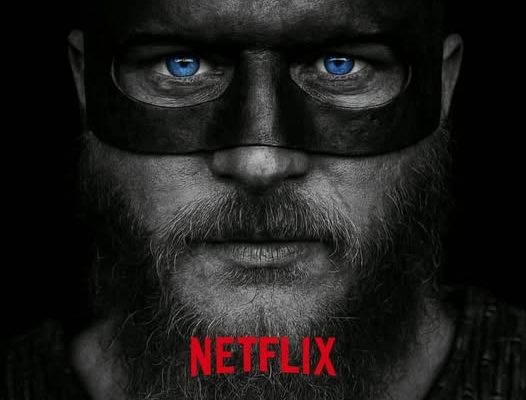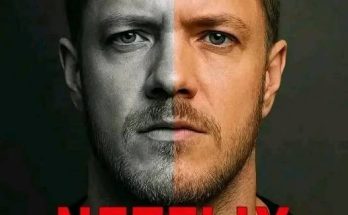Netflix is once again raising the stakes in the world of historical drama, and this time, it is venturing deep into the brutal, unyielding world of the Vikings. The streaming giant has unveiled its latest epic series, Odin’s Wrath, a visceral, immersive saga that promises to transport viewers to the raw, icy landscapes of Scandinavia, where the gods’ influence is palpable, and destiny is carved with blood and steel. From the very first scene, the series asserts itself as a formidable force in the pantheon of Viking storytelling, blending myth, history, and human drama into a seamless narrative that grips the senses and refuses to let go.
Odin’s Wrath follows the life of Ragnar Eiriksson, a young warrior whose destiny seems entwined with the divine from the moment of his birth. He is a man born under a blood-red sky, with the whispers of the gods guiding his every step, yet also the shadows of mortality looming over him. The narrative arc spans decades, tracing Ragnar’s rise from a fledgling fighter in a remote, snow-covered village to a legendary chieftain whose ambition challenges both men and gods alike. The show does not shy away from depicting the harsh realities of Viking life: winters that bite like a predator, battles that leave no room for mercy, and political intrigues that can destroy entire clans with a single misstep. Every frame is steeped in authenticity, painstakingly recreated to immerse viewers in a world where honor is everything, and betrayal can mean death.
The visual storytelling in Odin’s Wrath is nothing short of breathtaking. From the frozen fjords to the dense, misty forests where warriors train and plot, Netflix has invested in capturing every nuance of the Viking world. Cinematography is meticulously designed to convey both the vastness of the Scandinavian wilderness and the claustrophobic tension of crowded longhouses. Every set piece, from the longships cutting through storm-tossed seas to the intricately adorned halls of chieftains, evokes a sense of grandeur and peril, reinforcing the epic scale of the narrative. Costume design is equally impressive, blending historical accuracy with dramatic flair. The armor, weapons, and clothing feel lived-in, carrying the scars and stains of battle, grounding the mythic elements of the story in a tangible reality that audiences can almost touch.
But what truly sets Odin’s Wrath apart is its commitment to the characters’ inner lives. Ragnar is not merely a warrior; he is a man of conflicting impulses, torn between loyalty to his family, desire for glory, and a fear of the fate that the gods have whispered to him since birth. Supporting characters are equally compelling. Freydis, a fiercely intelligent shieldmaiden with a personal vendetta, navigates a male-dominated society with cunning and ferocity, her story arc challenging traditional notions of gender and power. Eirik, Ragnar’s steadfast but troubled brother, provides a moral counterpoint, questioning the ethics of conquest and vengeance. Together, these characters create a rich tapestry of relationships and rivalries, their personal stakes as high as the battles they fight, making every triumph and tragedy feel deeply resonant.
The series’ narrative is unflinching in its depiction of violence, yet it never feels gratuitous. Every clash of swords, every blood-soaked battlefield, serves to underscore the stakes of the story and the harsh realities of the era. Netflix has balanced this with moments of profound human connection: tender exchanges between family members, whispered prayers to the gods, and fleeting glimpses of joy in an otherwise unforgiving world. These moments of vulnerability provide a counterbalance to the relentless action, reminding viewers that behind the legend is always a human being grappling with love, loss, and mortality.
Mythology permeates every aspect of Odin’s Wrath, not as a backdrop but as a driving force that shapes the plot. Odin, the all-seeing and all-knowing god, looms over the story like a shadow, his influence felt in visions, omens, and the moral choices that the characters must make. The series delves into Norse cosmology with care and respect, exploring themes of fate, honor, and the cyclical nature of life and death. Legendary creatures, mystical artifacts, and divine interventions are woven seamlessly into the narrative, enhancing the drama without ever overwhelming the grounded, human story at its core. The gods are not distant abstractions; they are active participants in the unfolding saga, their presence both a source of inspiration and a harbinger of doom.
The show’s pacing is masterful, balancing the slow-burning tension of political maneuvering with the adrenaline-fueled chaos of battle. Episodes often begin with quiet, intimate moments that draw viewers into the characters’ world, only to erupt into sequences of breathtaking scale and intensity. This rhythm keeps audiences engaged, allowing for both reflection and exhilaration. Dialogue is sharp and evocative, conveying both the poetry and brutality of the era, while the musical score amplifies every emotion, from the thrill of victory to the despair of loss. Composers have blended traditional Scandinavian instrumentation with cinematic orchestration, creating a soundscape that feels both ancient and epic, perfectly complementing the visual grandeur.
One of the most remarkable aspects of Odin’s Wrath is its exploration of power and morality. Ragnar’s journey is not just about conquest; it is about understanding what it truly means to wield influence over others and over one’s own destiny. The series interrogates the nature of leadership, loyalty, and the price of ambition. Characters are constantly faced with ethical dilemmas, and the consequences of their choices ripple across generations, reinforcing the idea that history is written not just by victories in battle, but by the decisions made in moments of uncertainty. This thematic depth elevates the series above mere spectacle, offering viewers a narrative that is both entertaining and intellectually engaging.
Netflix has also made a conscious effort to represent the diversity and complexity of Viking society. While the popular imagination often reduces Vikings to marauding warriors, Odin’s Wrath presents a more nuanced portrait, exploring trade, diplomacy, and cultural exchange. The series highlights the role of women not only as warriors but as influential figures in governance and religion. It portrays the moral and social codes that governed Viking life, from laws governing property and family to the spiritual practices that connected humans to the divine. By doing so, the show enriches the viewer’s understanding of the era, grounding its epic narrative in a believable and textured historical world.
At its core, Odin’s Wrath is a story about destiny. It examines the tension between free will and fate, showing how characters strive to shape their own paths even as the gods seem to steer them toward inevitable ends. This exploration of human agency against a backdrop of divine influence gives the series a mythic resonance, echoing the timeless themes of classical epics while remaining distinctly rooted in Norse culture. The tension between personal desire and larger cosmic forces drives the drama forward, ensuring that every triumph is hard-won and every loss resonates with profound significance.
The series is poised to become a cultural touchstone, joining the ranks of other acclaimed historical epics while carving out its own unique identity. Netflix’s production values, attention to detail, and commitment to storytelling excellence make Odin’s Wrath not just a television show but an immersive experience. Fans of historical drama, mythology, and character-driven narratives will find themselves captivated, as will those seeking the kind of high-stakes, adrenaline-charged storytelling that only the Viking world can provide. The show’s combination of spectacle, emotional depth, and mythic ambition ensures that it will linger in viewers’ imaginations long after the final episode.



